Amatoxin-containing mushrooms are found all over the world, with certain species having a widespread distribution. One reason amatoxin fungi are so dangerous is because they are incredibly potent – even just half a mushroom cap can cause severe liver injury. These toxins are responsible for the majority of fatal mushroom poisonings worldwide, with 95% of deaths attributed to amatoxin-containing mushrooms.
While mushroom poisonings in North America aren’t common, they can be deadly so it’s essential to use extreme caution. And, if you ever suspect amatoxin or other mushroom toxin poisoning, seek medical help immediately. In these cases, every minute does matter.
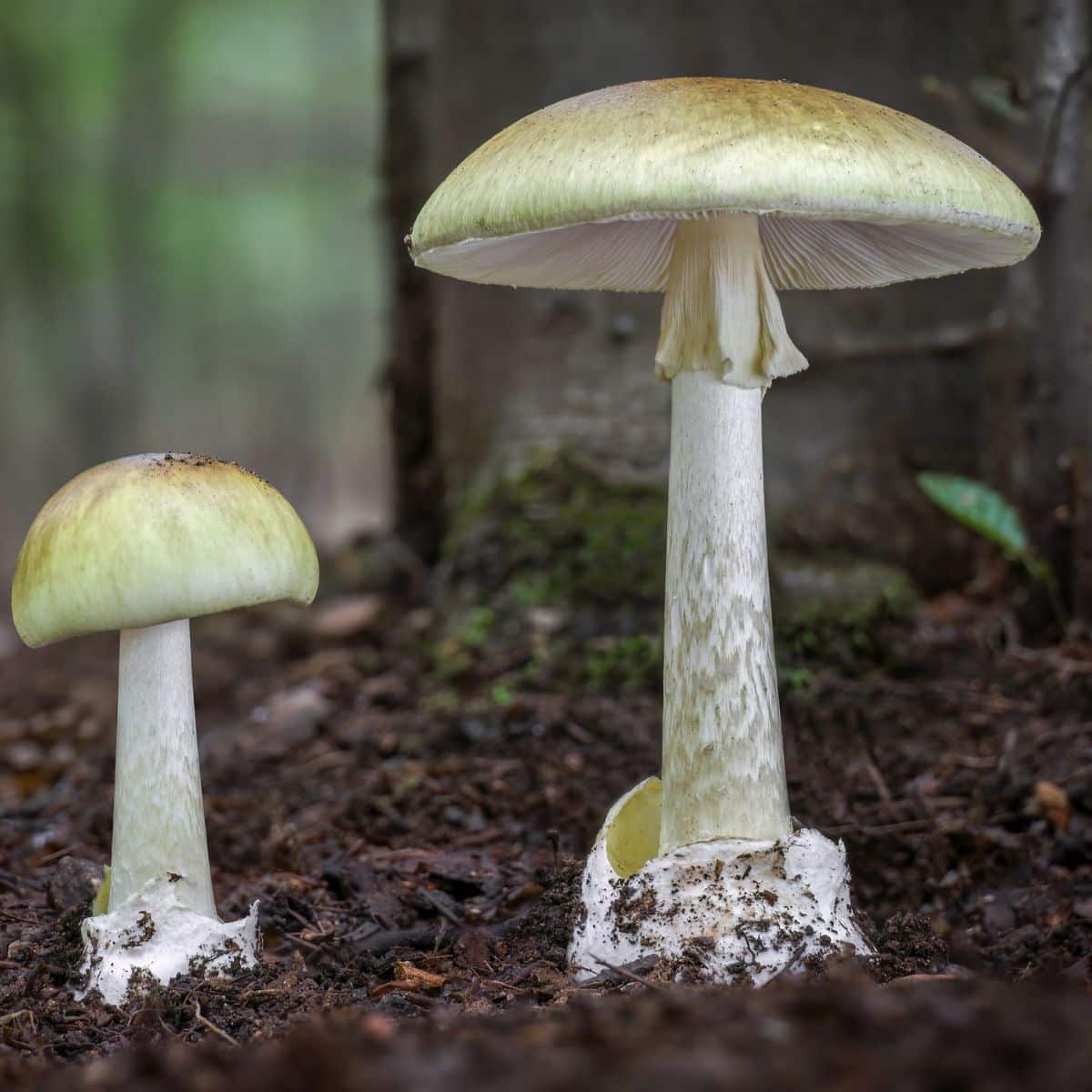
You may wonder why there are so many poisonings, since it seems like all a person has to do is avoid the dangerous species. There are several reasons poisonings occur every year with amatoxin-containing mushroom species.
- There isn’t just one dangerous amatoxin containing mushroom. The species vary widely and are even in more than one family. And their physical appearance varies greatly.
- They are mistaken by beginner or even experienced wild mushroom foragers for an edible species. (Mushroom foraging is not the place to be overconfident!)
- They are mistaken by hallucinogenic mushroom seekers as a potent psychedelic.
- Immigrants mistake them for edible mushrooms they forage in their home country.
The most notorious of these is Amanita phalloides, commonly known as the death cap. This species is responsible for most deaths following ingestion of foraged mushrooms worldwide.
The presence of amatoxins in these mushroom species makes them extremely dangerous when eaten. Even experts can mistake toxic species for similar-looking, non-toxic mushrooms. It is always crucial to exercise extreme caution and only eat mushroom you are 150% certain about or that have been identified by an expert mycologist.
Thankfully, death is rare when treatment is started immediately, at least in North America and other developed nations. This doesn’t mean death can be avoided, but due to improved diagnosis and medical care, most people will recover. However, they may have long-lasting effects from the damage the amatoxin did, including liver failure or the need for a kidney transplant. Around 12% of healthy adults poisoned will die or require a liver transplant.
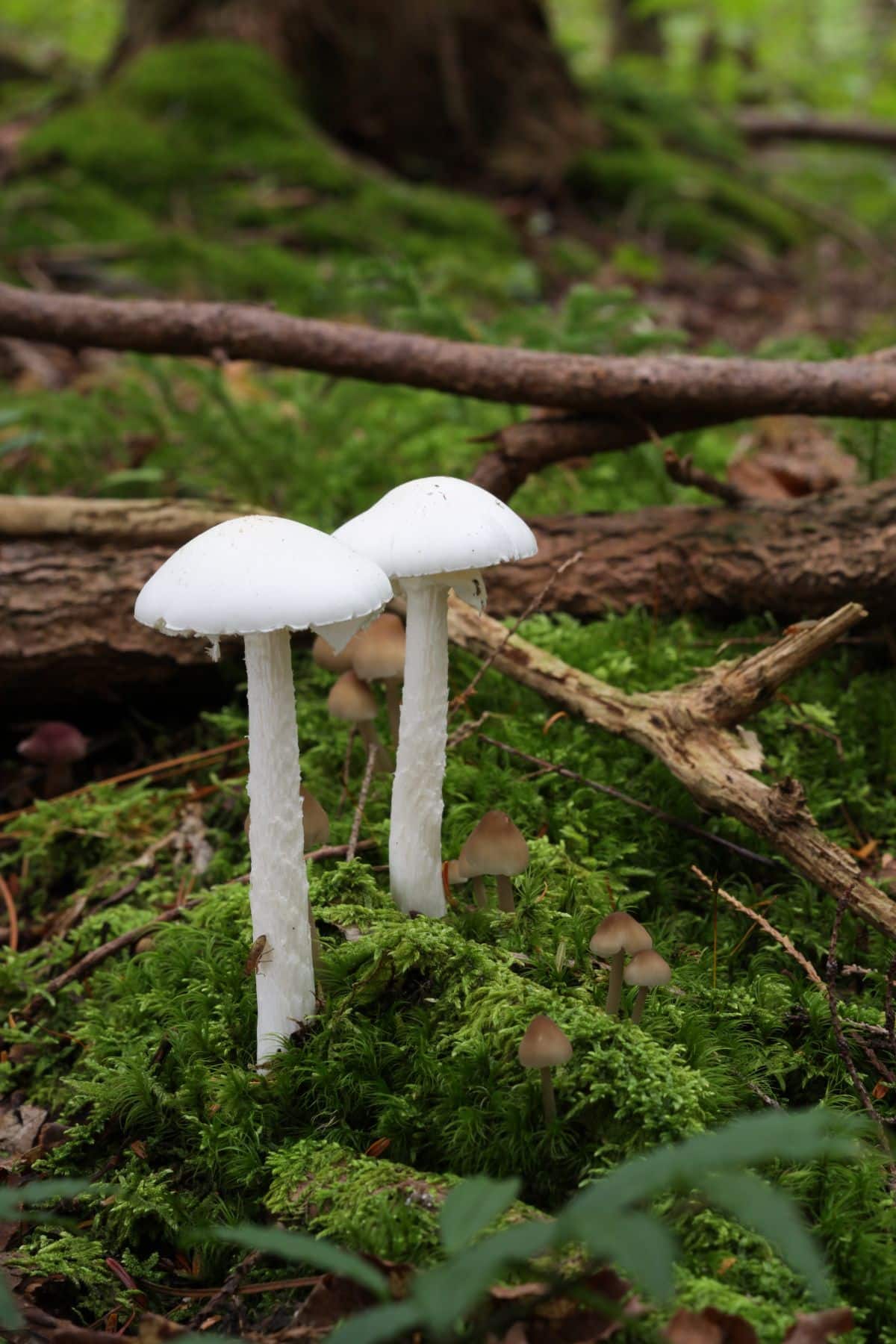
Jump to:
- What Are Amatoxins?
- Why Are Amatoxins So Dangerous
- The Phases Of Amatoxin Poisoning
- Amatoxin Susceptibility Factors
- Diagnosis and Treatment of Amatoxin Poisoning
- Mushroom Species Containing Amatoxins
- The History of Amatoxin Discovery
- Notable Amatoxin Poisoning Cases
- Mushroom Identification Importance
- Comparative Toxicology of Amatoxins Vs Other Mycotoxins
- Amatoxin Toxicity To Animals
- Potential Therapeutic Applications of Amatoxins
- Common Confusions With Edible Species
- Amatoxin Poisoning Statistics and Trends
- Amatoxin Poisoning Quick Guide
- Common Questions About Amatoxin
If you suspect poisoning by these mushrooms, call the Poison Control Center at 1-800-222-1222 for guidance on what to do. It is extremely important that you call as soon as possible after eating it.
This article by the Poison Control Center is informative — read the True Story in their sidebar. To put it mildly, don’t mess with amatoxin species and make sure you know their edible lookalikes!
What Are Amatoxins?
Amatoxins are a group of bicyclic octapeptides found in certain mushroom species, including the notorious death cap (Amanita phalloides) and destroying angel (Amanita virosa). These compounds are responsible for the severe and potentially fatal poisoning associated with the ingestion of these mushrooms. The amatoxins have a unique structure that contributes to their potent toxicity. They are cyclic peptides consisting of eight amino acid residues.
Why Are Amatoxins So Dangerous
Amatoxins are known for their remarkable stability and resistance to various environmental factors. These properties make amatoxins exceptionally dangerous, as they can remain toxic even after cooking or other preparation methods. That’s right, cooking these mushrooms will not make them less toxin, as is the case with other toxin-containing species like gyromitra. Their stability and resistance to degradation contribute to their accumulation in the body and prolonged toxic effects.
- Heat stability: These toxins can withstand high temperatures, making them resistant to cooking or drying. Prolonged cooking may alter their chemical structure but does not nullify the toxin.
- pH resistance: These toxins remain stable in acidic conditions, such as those used in cooking preparations or the human digestive system.
- Enzyme resistance: The toxins are not broken down by human digestive enzymes, allowing them to pass through the gastrointestinal tract intact.
- Freezing resistance: A fatal case was reported after consuming A. phalloides mushrooms that had been frozen for 7-8 months — they are resistant to freeze/thaw cycles.
- Light resistance: This toxin decomposes very slowly when exposed to sunlight or neon light.
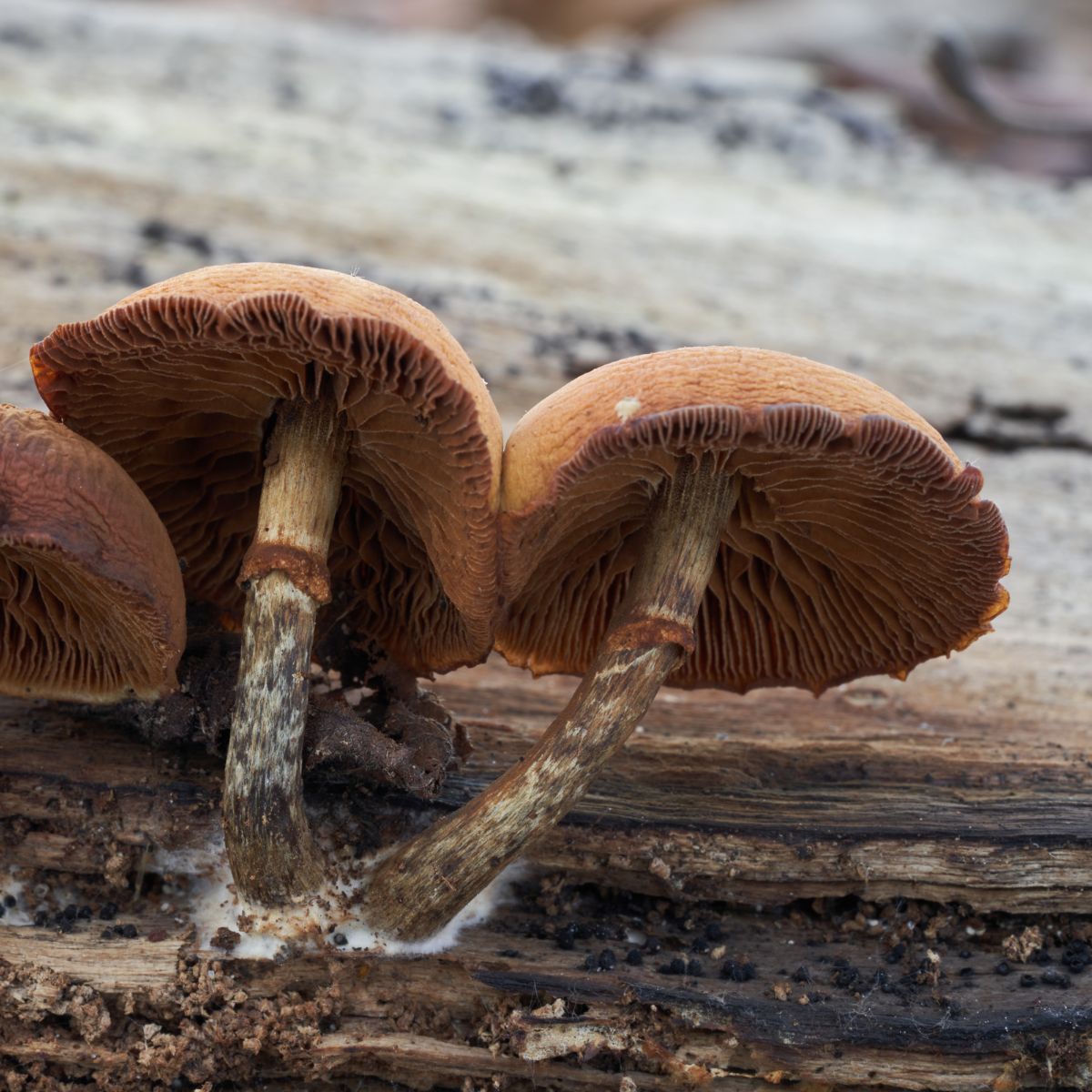
The Phases Of Amatoxin Poisoning
Amatoxin poisoning typically progresses through three distinct stages, each characterized by specific symptoms and physiological changes. One of the biggest reasons these toxins are so dangerous is that there is a period of apparent recovery that can last several days. This leads to people thinking they are recovering and also means that many people get dismissed from the hospital (if they went).
Many people don’t go to the hospital because the symptoms are “resolving.” This in-between times also means that many people don’t attribute their symptoms to the mushroom because it was consumed so many days prior. And this, in turn, leads to misdiagnosis. The estimated lethal dose of amatoxin for an adult person is 7-10 milligrams.
Stage I (6-12 hours post-ingestion):
- No symptoms
- Sudden onset of nausea, vomiting, and watery diarrhea
- Cramping abdominal pain
- Potential dehydration and hypotension (low blood pressure)
- Patients often present during this stage and may be erroneously discharged if misdiagnosed.
Stage II (24-48 hours post-ingestion):
- Apparent clinical improvement
- Ongoing liver and kidney damage, despite symptom resolution
- Progressive organ damage, even though patient feels fine
Stage III (2-6 days post-ingestion):
- Severe liver injury or failure
- Severe coagulopathy (blood cannot clot)
- Kidney failure
- Encephalopathy (Brain disfunction, which may include amnesia, personality changes, loss of muscle coordination, and coma)
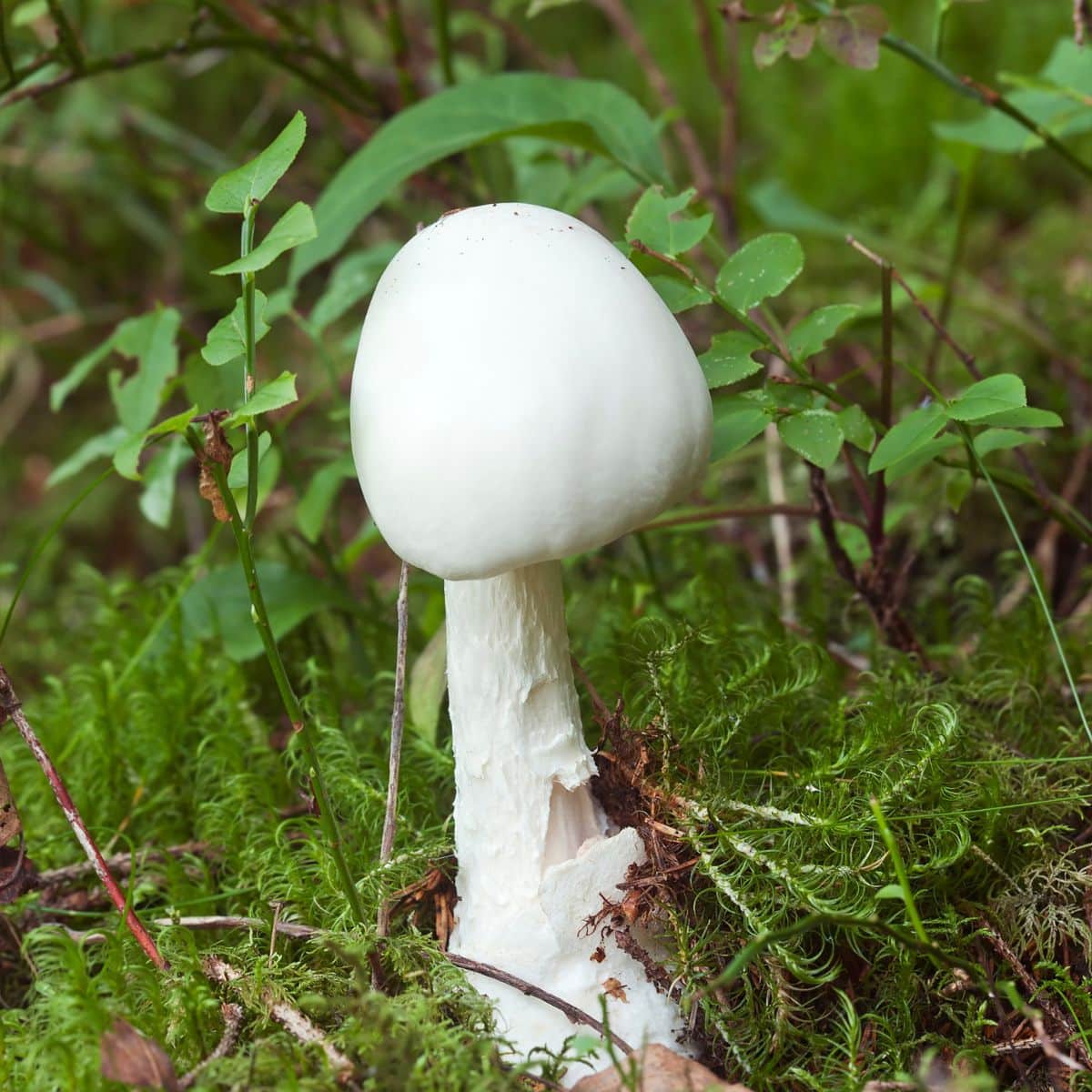
What Is Happening Internally: Organ-Specific Symptoms
Amatoxin poisoning affects multiple organ systems, leading to various clinical manifestations:
Gastrointestinal:
- Profuse watery diarrhea
- Abdominal cramping
- Vomiting
Cardiovascular:
- Tachycardia (fast heart rate)
- Hypotension
- Potential circulatory collapse due to severe fluid loss
Hepatic (Liver):
- Jaundice
- Hepatomegaly (enlarged liver)
- Elevated serum aminotransferase levels (liver damage)
- Lengthening of prothrombin time (PT) (the time it takes for blood to clot)
- Progression to complete liver failure
Renal (Kidneys):
- Acute kidney injury
- Development of hepato-renal syndrome (rapid deterioration of the kidneys)
Neurological:
- Confusion
- Agitation
- Lethargy
- Seizures
- Coma (in severe cases)
Long-Term Effects Of Amatoxin Poisoning
While the immediate focus is on acute management, amatoxin poisoning can have long-lasting consequences. This is another reason this toxin is so dangerous. It isn’t just about being cured from the immediate poisoning – the effects of amatoxin poisoning can be life-long.
Chronic Liver Disease
Some patients who recover from acute liver failure may develop chronic liver disease. The reasons for this are not fully understood, but it’s thought that changes in liver structure may induce autoimmunity. This can lead to chronic hepatitis with potential progression to end-stage liver disease
Polyneuropathy
This is the successive breakdown of many nerves throughout the body, including those around the brain and spinal cord. It affects muscle coordination, digestive health, and nerve endings (sensory feelings). It is not fatal but seriously affects quality of life.
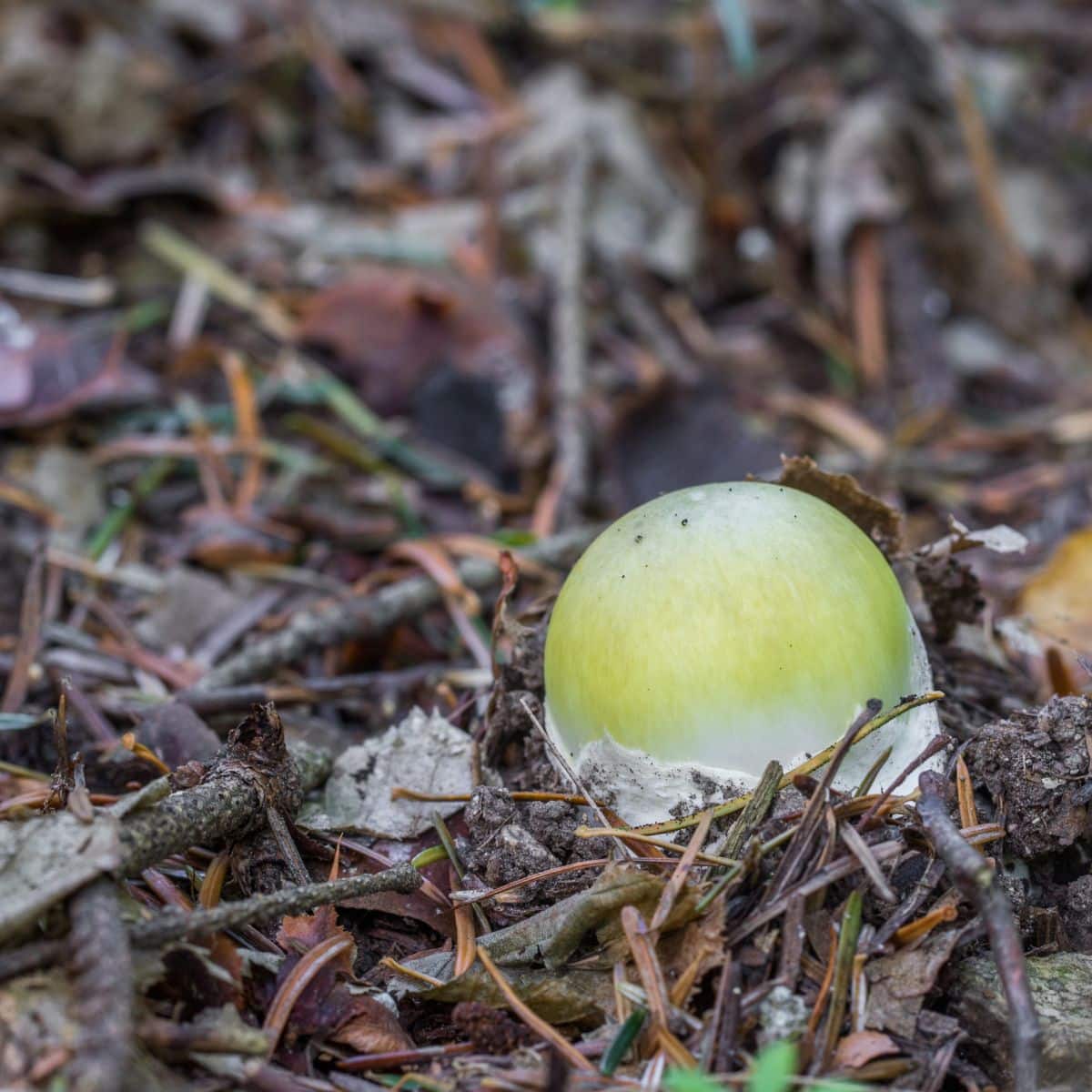
Amatoxin Susceptibility Factors
Several factors influence human susceptibility to amatoxin poisoning:
- Dose: The amount of toxin ingested plays a crucial role in the severity of poisoning. It’s estimated that consuming more than 50g of fresh Amanita phalloides, roughly two medium-sized mushrooms, could be deadly.
- Age: Children tend to absorb higher doses of the toxin compared to adults, resulting in much higher morbidity and mortality rates. Mortality rates are higher in children because they absorb a larger dose of toxins per kilogram of body weight.
- Health Status: Individuals with pre-existing liver, kidney, or central nervous system disorders may be more susceptible to the effects of these toxins.
- Genetic Factors: Certain genetic polymorphisms that affect the metabolism and excretion of the toxins can influence an individual’s susceptibility.
- Exposure Route: Ingestion is the primary route of poisoning. Amatoxins are not absorbed through the skin (you can touch and handle them without any issues). However, inhaling amatoxin-containing particles may cause respiratory tract irritation and other systemic effects — but it isn’t enough to kill or seriously injure you.
Understanding these factors is crucial for healthcare providers in assessing and managing potential poisoning cases. The rapid onset of symptoms, combined with the high toxicity of amatoxins, makes early recognition and prompt treatment essential for improving patient outcomes.
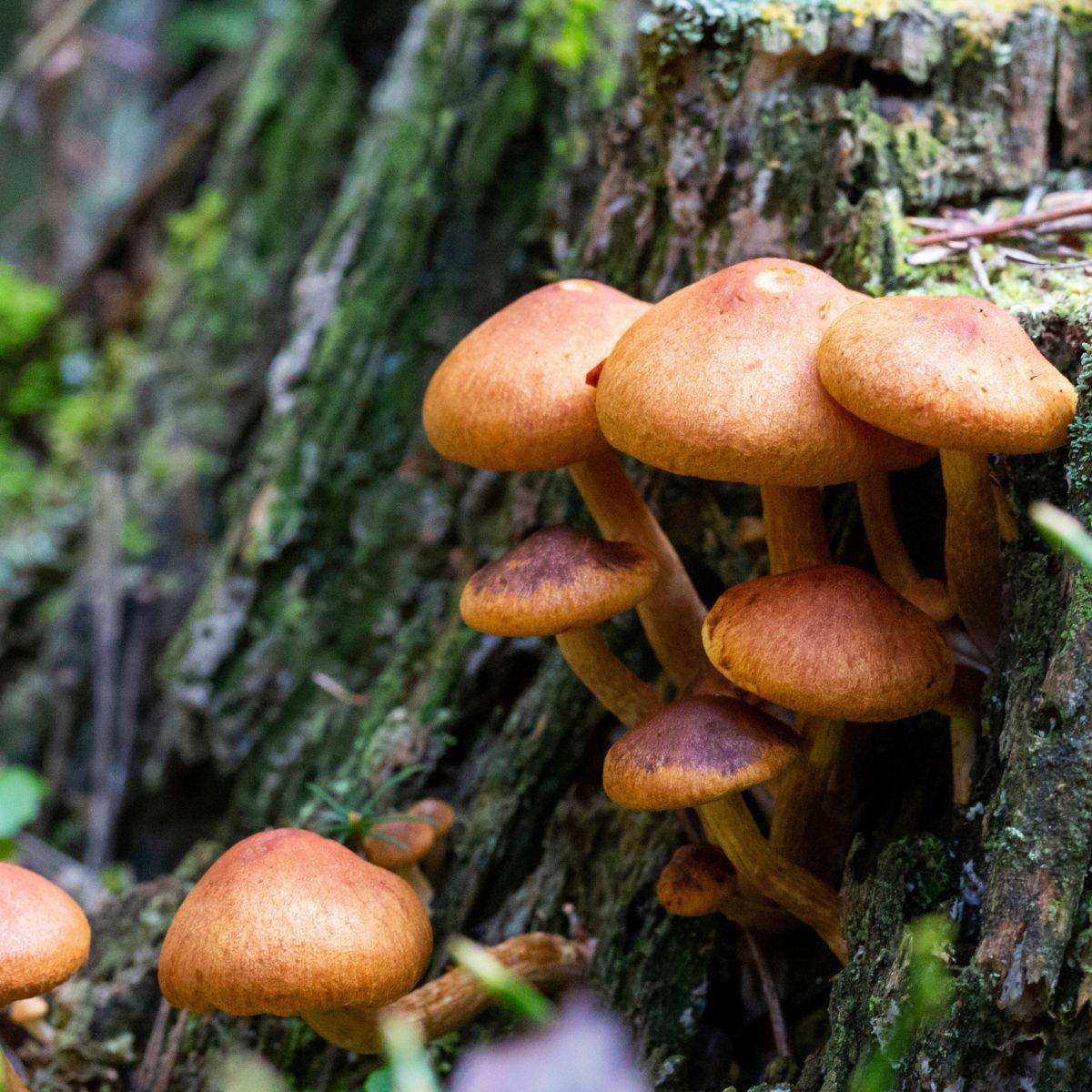
Diagnosis and Treatment of Amatoxin Poisoning
Early Detection Methods
Diagnosing amatoxin poisoning requires careful history-taking with particular attention to the sequence of events. And, for the person eating who ate the mushrooms to be honest and hopefully be able to recall the mushroom with images. Several tests are available to detect amatoxins in body fluids or liver tissue. These include radioimmunoassay, enzyme-linked immunosorbent assay (ELISA), and high-performance liquid chromatography. The detection window for amatoxins can extend up to 5 days in urine and 22 days in tissue after ingestion.
The lateral flow immunoassay (LFIA) is a promising development in early detection. This method utilizes reagents similar to those used in ELISA but can be completed in minutes without specialized equipment. LFIA shows potential for rapid amatoxin analysis in urine samples, which are easier to obtain and have a longer detection window compared to serum.
Medical Treatments
Treatment for amatoxin poisoning primarily involves supportive care, as there is no specific antidote. Key interventions include:
- Fluid and electrolyte management: Aggressive intravenous fluid therapy and electrolyte correction are essential.
- Decontamination: If the patient presents within 1-2 hours of ingestion, activated charcoal may be administered to reduce toxin absorption.
- N-acetylcysteine (NAC): This agent protects the liver by scavenging oxygen free radicals. It’s administered intravenously, starting with a loading dose followed by maintenance doses.
- Silibinin: Derived from milk thistle, silibinin inhibits the uptake of amatoxins by hepatocytes. While it’s the treatment of choice in Europe, it’s not available in the United States.
- Penicillin G: This antibiotic may help displace toxins from plasma proteins and inhibit their uptake by hepatocytes.
- Multiple-dose activated charcoal: This can inhibit amatoxin absorption through the intestinal mucosa and interrupt enterohepatic circulation.
Liver Transplantation
In severe cases where medical interventions fail to prevent complete liver failure, liver transplantation may be the only life-saving option. The decision to proceed with transplantation is based on various parameters, including the development of hepatic encephalopathy, hepatorenal syndrome, or coagulopathy.
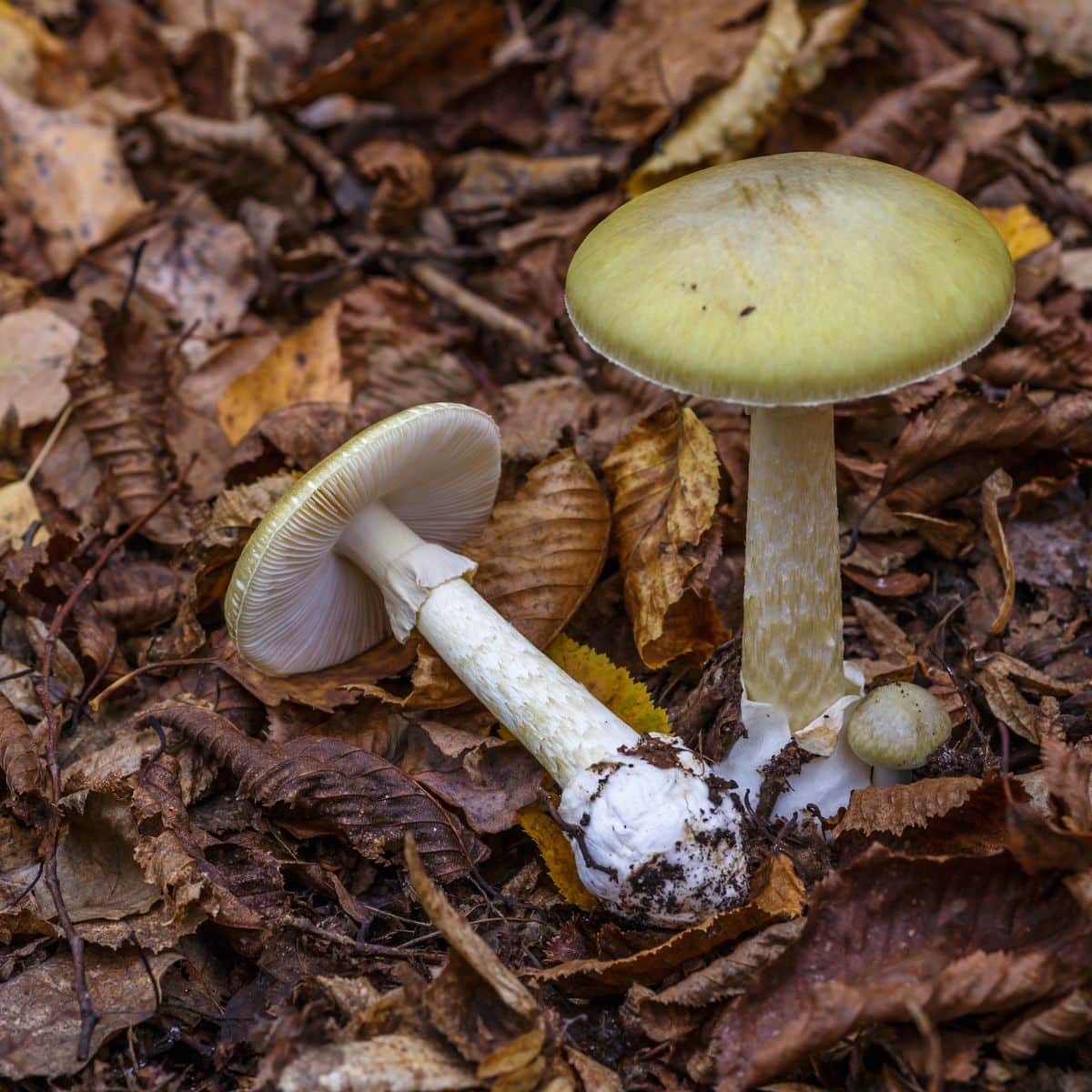
Mushroom Species Containing Amatoxins
*the highlighted species occur in North America
Amanita Species
The Amanita genus is home to some of the most notorious amatoxin-containing mushrooms. Key species include:
- Amanita phalloides (Death Cap): Generally considered the most toxic of the world’s cyclopeptide-containing mushrooms. Studies done in 2013 found that the highest concentrations of amatoxins were in the gills and cap, and the spores and mycelium had lower levels. This mushroom doesn’t just have amatoxins, either. It also contains phallotoxins, which are toxic to the liver but, interestingly, aren’t absorbed through the gut, so they don’t pose as many problems.
- Amanita virosa & Amanita verna (European Destroying Angels)
- Amanita bisporigera & Amanita ocreata (North American Destroying Angels) – This beautiful all-white mushroom is widespread in North America and responsible for a quite a few deaths because it closely resembles some edible species.
- Amanita verna (Fool’s Mushroom)
- Amanita suballiacea (Garlic Odored Death Cap) — An all white lookalike to the destroying angel, this amanita occurs in the southeast, specifically around the Gulf Coast. It smells strongly of garlic.
- Amanita hygroscopica (Pink Gilled Destroying Angel) — This species also looks like the destroying angel except it doesn’t have all white gills. This actually makes it easier to confuse with edible species.
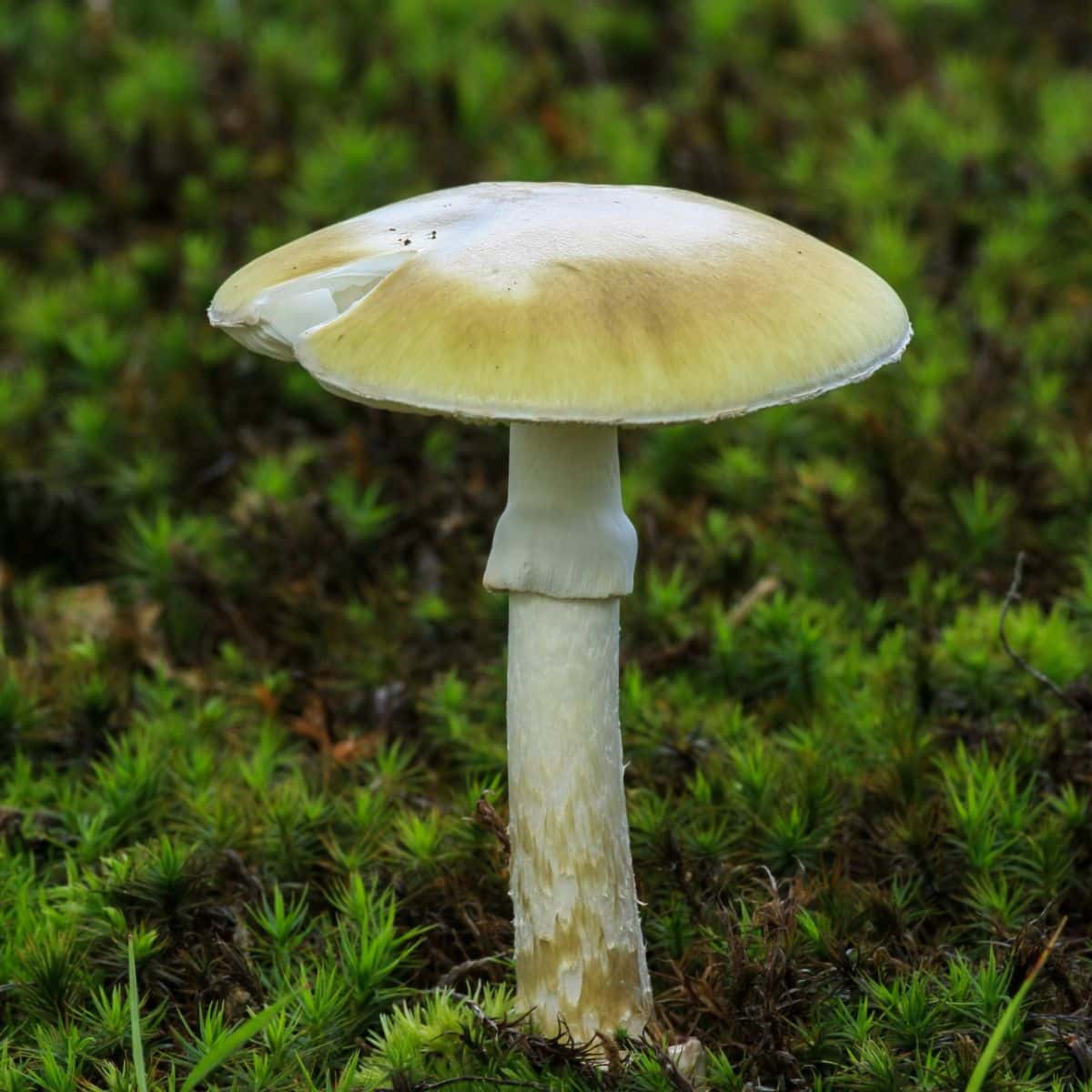
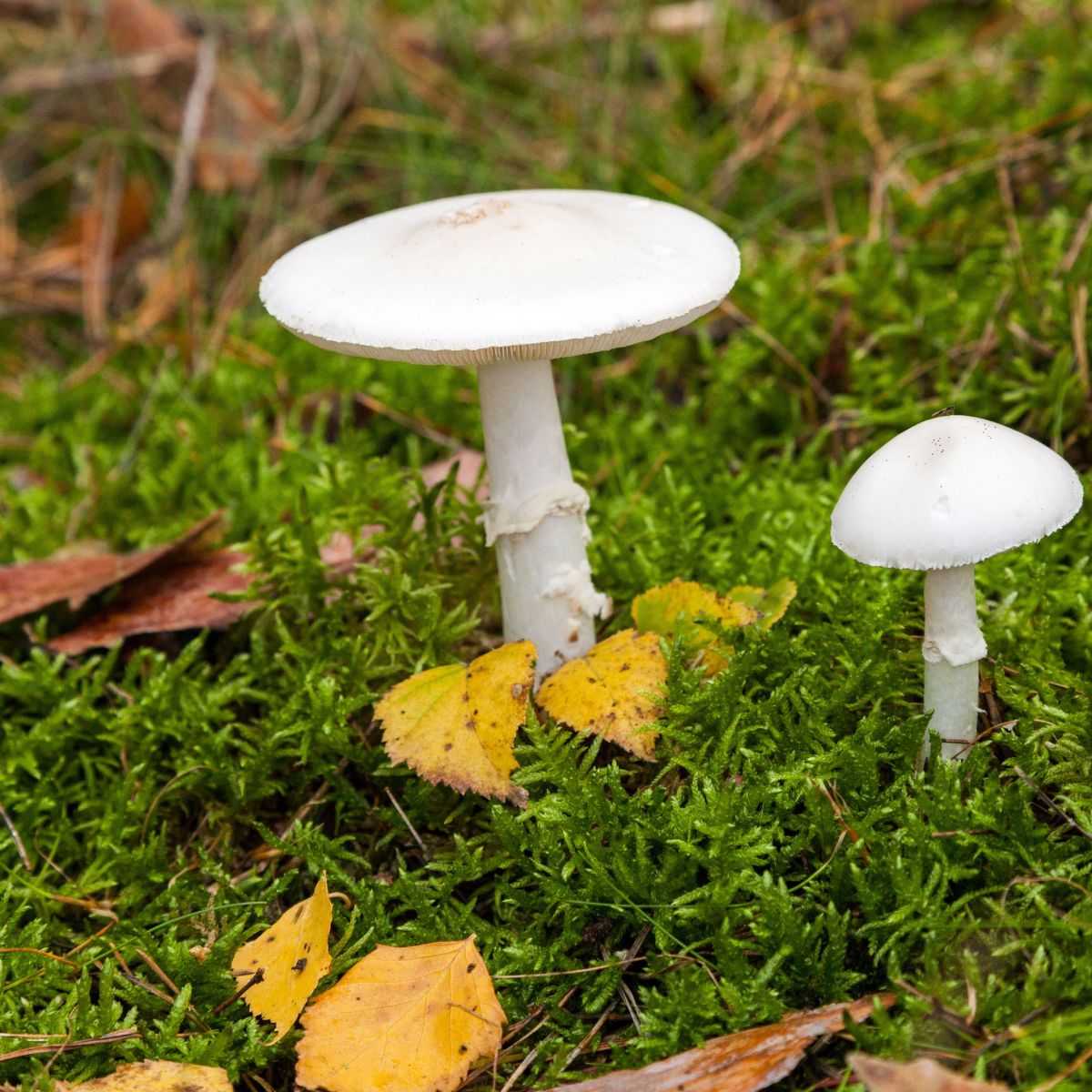
Galerina Species
- Galerina marginata group (Autumn Skullcap): Contains α-amanitin and γ-amanitin. This small brown mushroom doesn’t look scary at all but it is extremely dangerous.
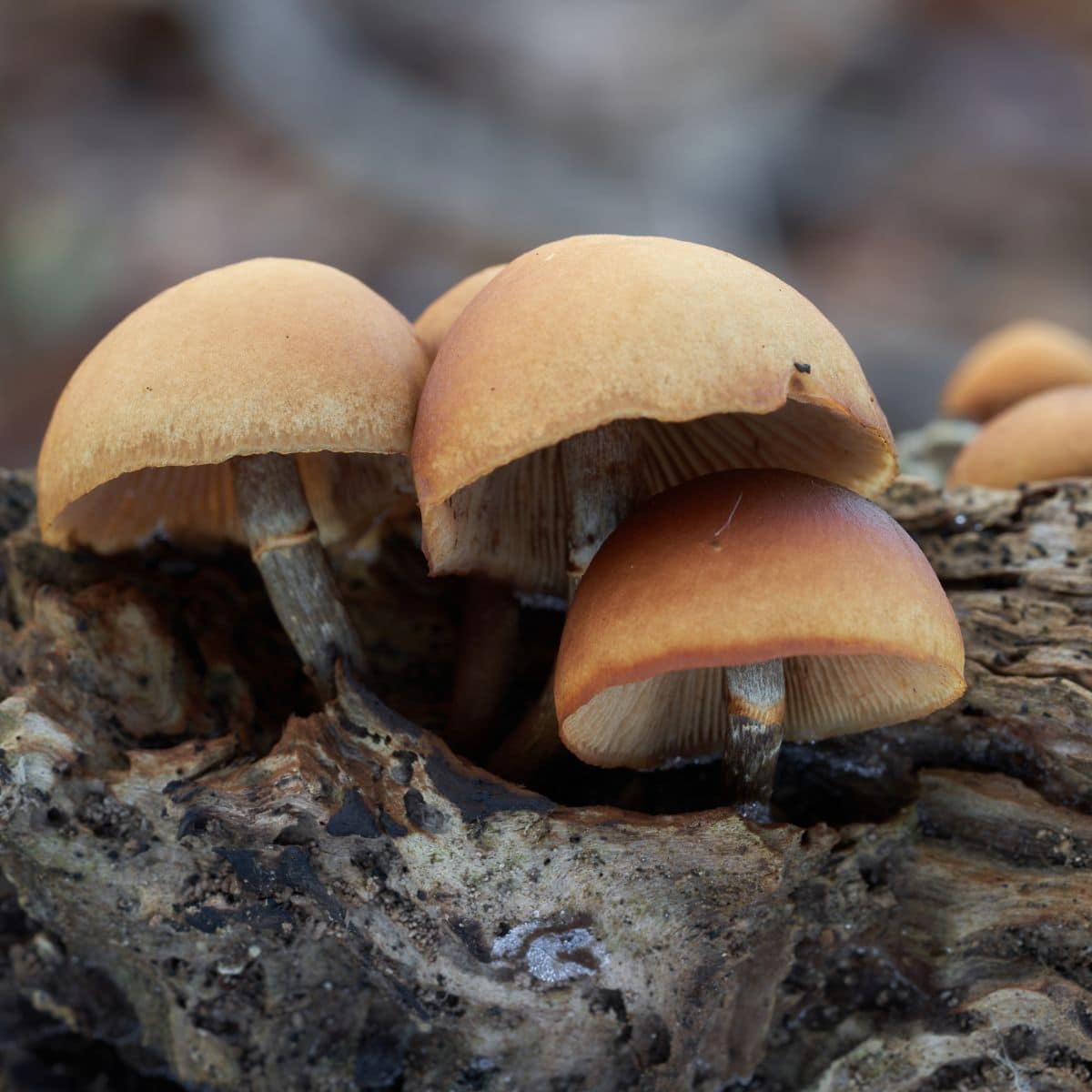
Lepiota Species
- Lepiota josserandii (Deadly parasol): Contains high levels of α-amanitin (3.99-4.39 mg/g dry weight), more than three times higher than found in Amanita species.
- Lepiota brunneoincarnata (Deadly dapperling): Contains α-amanitin, β-amanitin, amanin, and a compound resembling amaninamide.
- Lepiota helveola
- Lepiota subincarnata (Fatal dapperling)
- Lepiota clypeolaria (Shield dapperling)
For more information about Lepiota mushrooms, check out our guide: Lepiota Mushrooms: Identification Guide
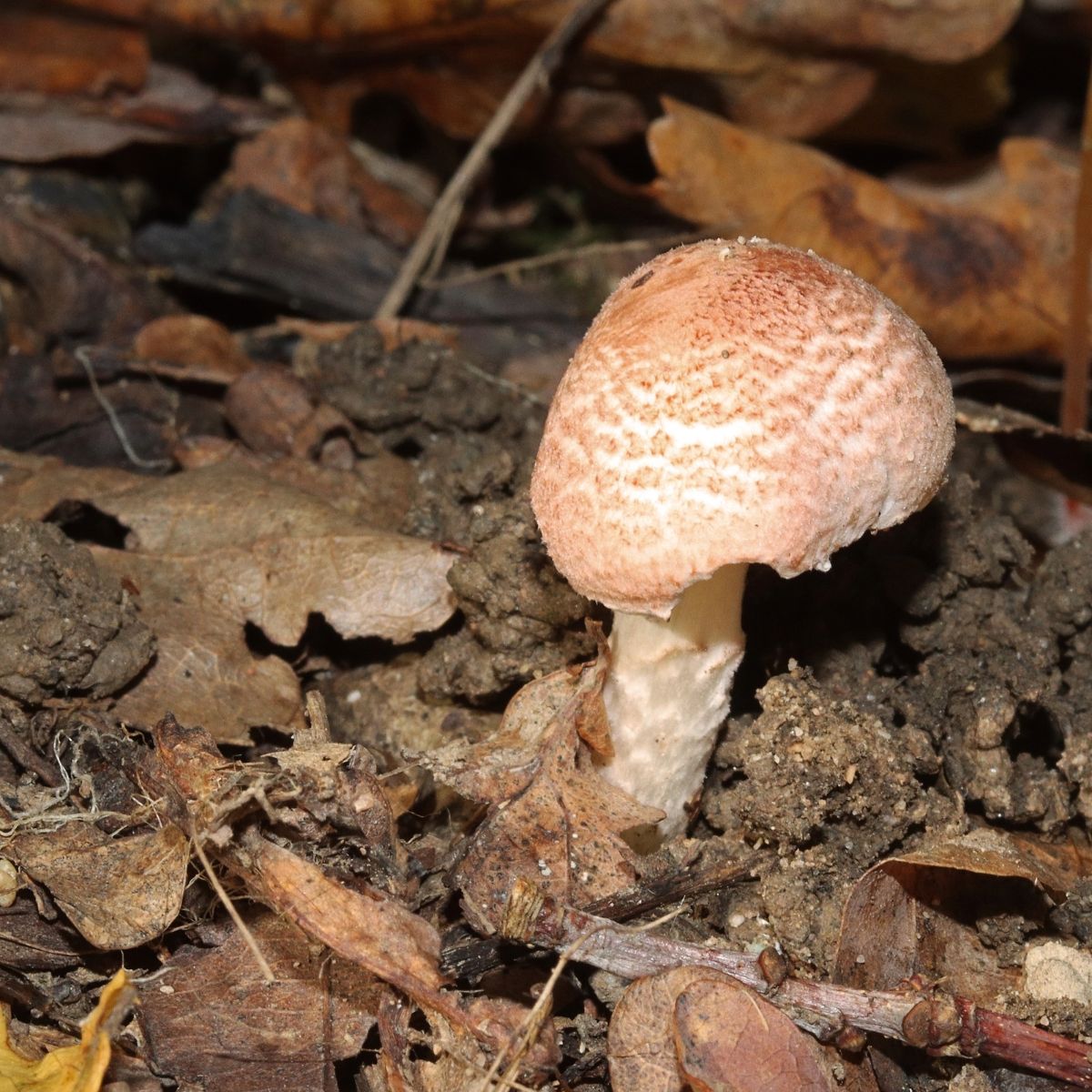
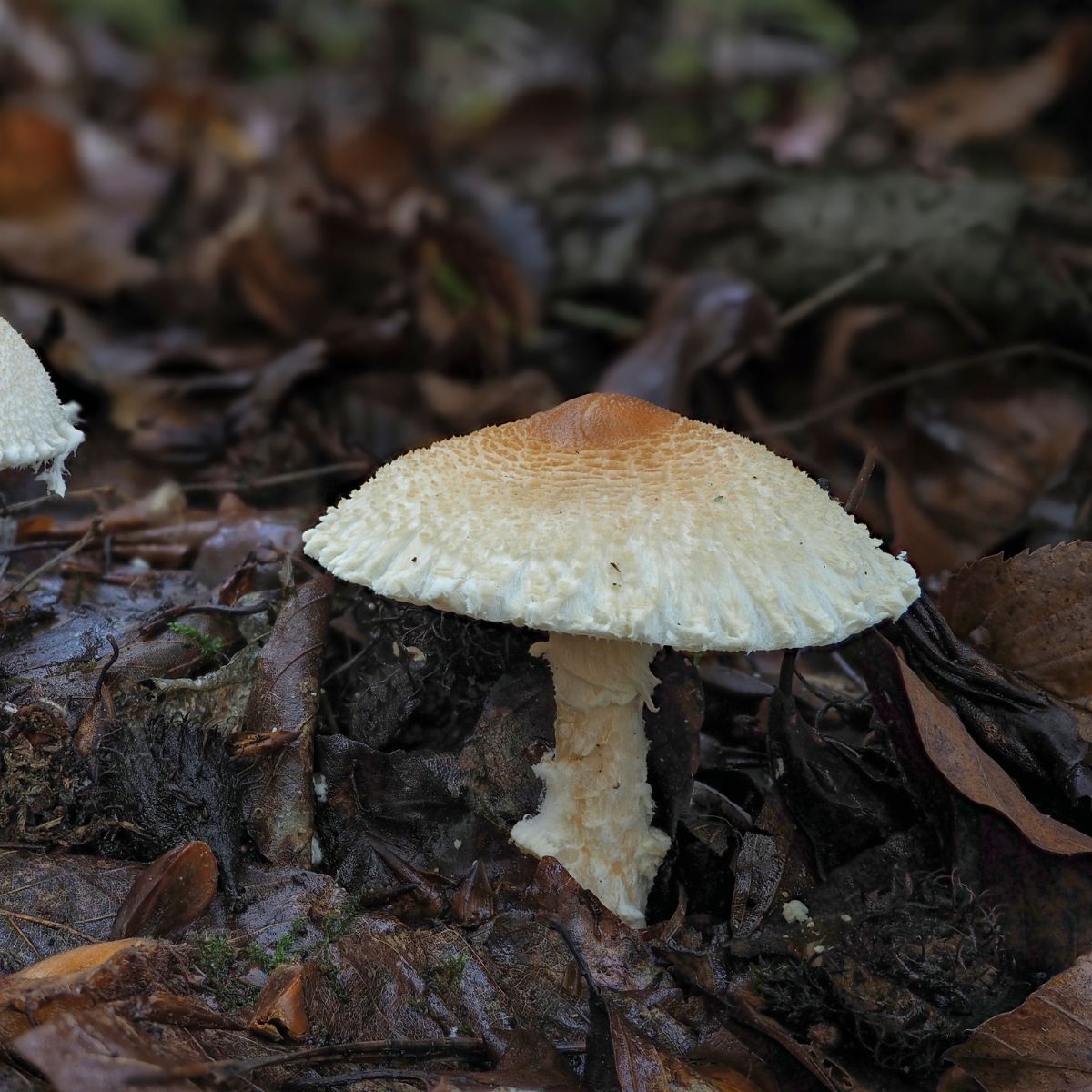
The History of Amatoxin Discovery
The history of amatoxin discovery is closely tied to observations of severe mushroom poisonings. Amanita species, particularly Amanita phalloides (commonly known as the death cap), gained notoriety for causing fatal mushroom poisonings worldwide. These mushrooms were found to be responsible for 90% of fatal mushroom poisonings.
Researchers began to isolate and identify amatoxins in the early 20th century. In 1941, Heinrich O. Wieland and Rudolf Hallermayer successfully isolated them. These compounds were found to be cyclic peptides with a unique structure consisting of eight amino acid residues arranged in a conserved macrobicyclic motif.
The most studied amatoxins are α-amanitin and β-amanitin. These toxins were found to be highly soluble in water and remarkably resistant to heat, cold, and various preparation processes such as cooking, freezing, and drying. Their resistance to enzymes and acid degradation made them particularly dangerous, as they could survive intestinal inactivation and detoxification processes.
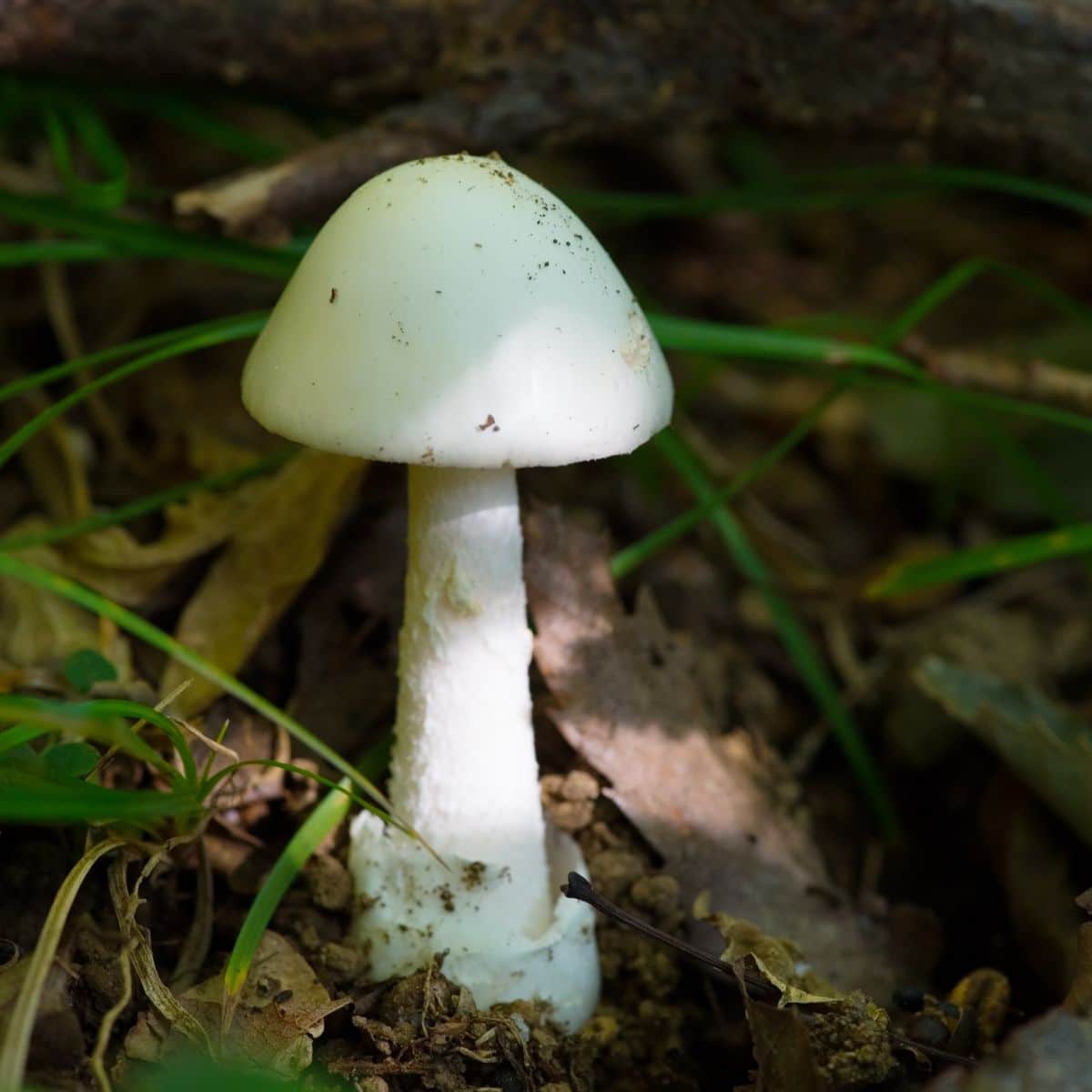
Notable Amatoxin Poisoning Cases
One of the most significant cases that contributed to our understanding of amatoxin poisoning involved a 15-year-old boy who attempted suicide by ingesting wild mushrooms. This case provided crucial toxicokinetic data. Amatoxins were detected in the boy’s gastric fluid and urine as early as 90-120 minutes after ingestion, proving the rapid absorption of these toxins from the intestinal tract and their quick excretion by the kidneys in humans.
This case, among others, helped establish that the estimated minimum lethal dose of amatoxins is 0.1 mg/kg or 7 to 10 milligrams of toxin in adults. The swift intestinal absorption and thermostability of these toxins led to the rapid development of toxic effects in a relatively short period.
In 2015, a case study was done of a 61-year-old man who ate two death cap mushroom caps — he didn’t know what they were but decided to test their edibility by eating them. He admitted himself to the hospital one day after eating the mushrooms with nausea, abdominal pain, fatigue, and diarrhea. The patient was treated and discharged 9 days later and did not show any other signs of liver damage. It was estimated that he ate 43.4 grams (fresh) with about 21.3 mg of amatoxin (mushrooms from the same location were collected to be tested). This nonlethal case and analysis of the exact amount of amatoxin ingested led researchers to determine that it takes about 50g of fresh mushroom to be deadly.
In China, the funeral bell mushroom (Galerina marginata, aka Galerina autumnalis) was mistaken for an edible species with disastrous results. Two grandparents and their 15-year-old grandchild ate the mushrooms and experienced poisoning symptoms 10-14 hours afterward. The grandparents attributed it to food poisoning (but not mushroom poisoning) and did not seek medical help until 48-63 hours later. They received care, but it was too late, and both died of acute liver failure, one just 5 days after the initial ingestion. The 15-year-old boy went to the hospital 4 hours after experiencing symptoms and was treated immediately for mushroom poisoning. He recovered.
More recently, there was a case of attempted murder with death cap mushrooms in Australia. If you were following the news in 2023, you probably heard about this one. A woman fed her in-laws a meal which allegedly contained death cap mushroom (Amanita phalloides). Three of the four people who ate the lunch died after prolonged hospital stays. The case is ongoing as of Jul 2024.
These are just a few of the cases related to Amatoxin poisonings. There are many many more.
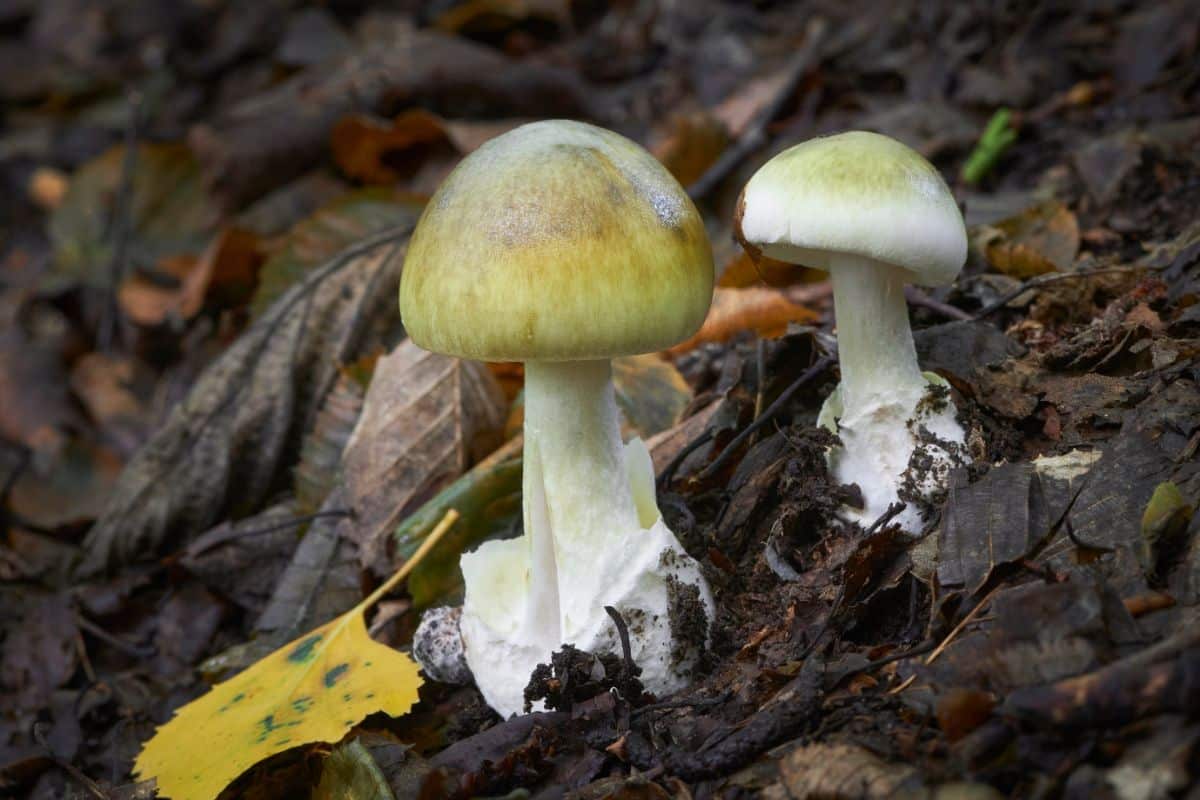
Mushroom Identification Importance
Accurate identification of mushrooms is crucial for preventing amatoxin poisoning. Mushroom experts can usually identify deadly mushrooms by their appearance. Still, it’s important to note that visual identification alone is not foolproof. Foragers should never rely solely on mushroom identification apps or a single identification method. Here’s a great place to get started with basic mushroom identification – Mushroom Foraging 101
Comparative Toxicology of Amatoxins Vs Other Mycotoxins
Amatoxins stand out as a unique group of mycotoxins, distinct from other well-known fungal toxins such as aflatoxins, ochratoxins, and trichothecenes. The toxins produced by certain these species have a specific mode of action that sets them apart. While other mycotoxins typically target various cellular processes, amatoxins specifically inhibit RNA polymerase II, an enzyme crucial for the transcription of messenger RNA (mRNA) from DNA. This inhibition leads to a shutdown of protein synthesis and, ultimately, cell death, particularly in metabolically active tissues like the liver and kidneys.
Amatoxin Toxicity To Animals
In mammals, the liver is the primary target organ for amatoxin toxicity. Upon ingestion, amatoxins are rapidly absorbed from the intestine and transported into the liver. Then, it usually takes around 24 hours before any signs of liver injury begin to appear.
There aren’t any good statistics for pets (especially dogs) being poisoned by amatoxin, but it is often fatal for them. Like with children, their lower body weight makes the toxin more severe and more often fatal. There are treatments, though, for dogs, so it is not a certain death.
At least in one case, a dog survived amatoxin poisoning after eating death caps that were growing in their yard. The owners were able to get (and afford) top quality care and the dog recovered. However, soon after she was diagnosed with Addison’s disease, which may have been brought on by the amatoxin poisoning (there isn’t enough research to say for certain).
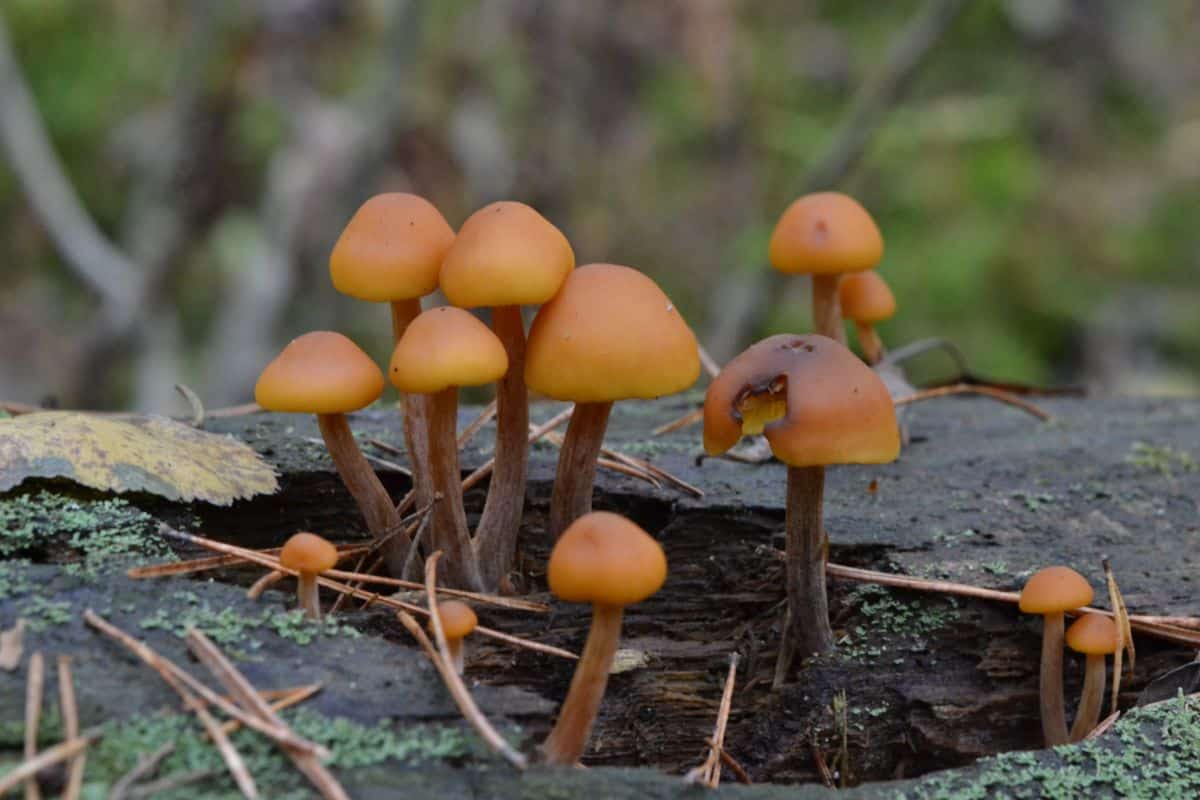
Potential Therapeutic Applications of Amatoxins
Despite their notorious reputation as deadly toxins, amatoxins have shown promising potential in various therapeutic applications. Researchers are exploring innovative ways to harness the unique properties of these compounds for medical purposes.
Cancer Research
Scientists have discovered that amatoxins, particularly α-amanitin, can be used to target and eliminate cancer cells. The mechanism of action allows amatoxins to affect both rapidly growing and dormant cancer cells. This is something that is currently limited in many current chemotherapeutic agents.
In a groundbreaking study, researchers injected sublethal doses of α-amanitin into mice with xenografts containing human cancer cell lines resistant to common chemotherapeutics. The results were promising, as the cancer did not relapse, and α-amanitin was found to inhibit drug-tolerant colonies.
Targeted Drug Delivery
One of the most exciting developments in amatoxin research is the creation of antibody-drug conjugates (ADCs). Germany-based Heidelberg Pharma has been at the forefront of this research, developing analogs of α-amanitin for cancer treatment and testing ADCs of this toxin.
Amanita phalloides dilutions have shown promise in treating various cancer types with minimal side effects. Studies have reported stabilization of different cancers, including B-cell chronic lymphatic leukemia, mammary duct cancer, and prostate cancer.
Common Confusions With Edible Species
The difficulty in distinguishing toxic species from edible ones has resulted in accidental ingestions.
Amanita phalloides, for instance, is often mistaken for the edible paddy straw mushroom.
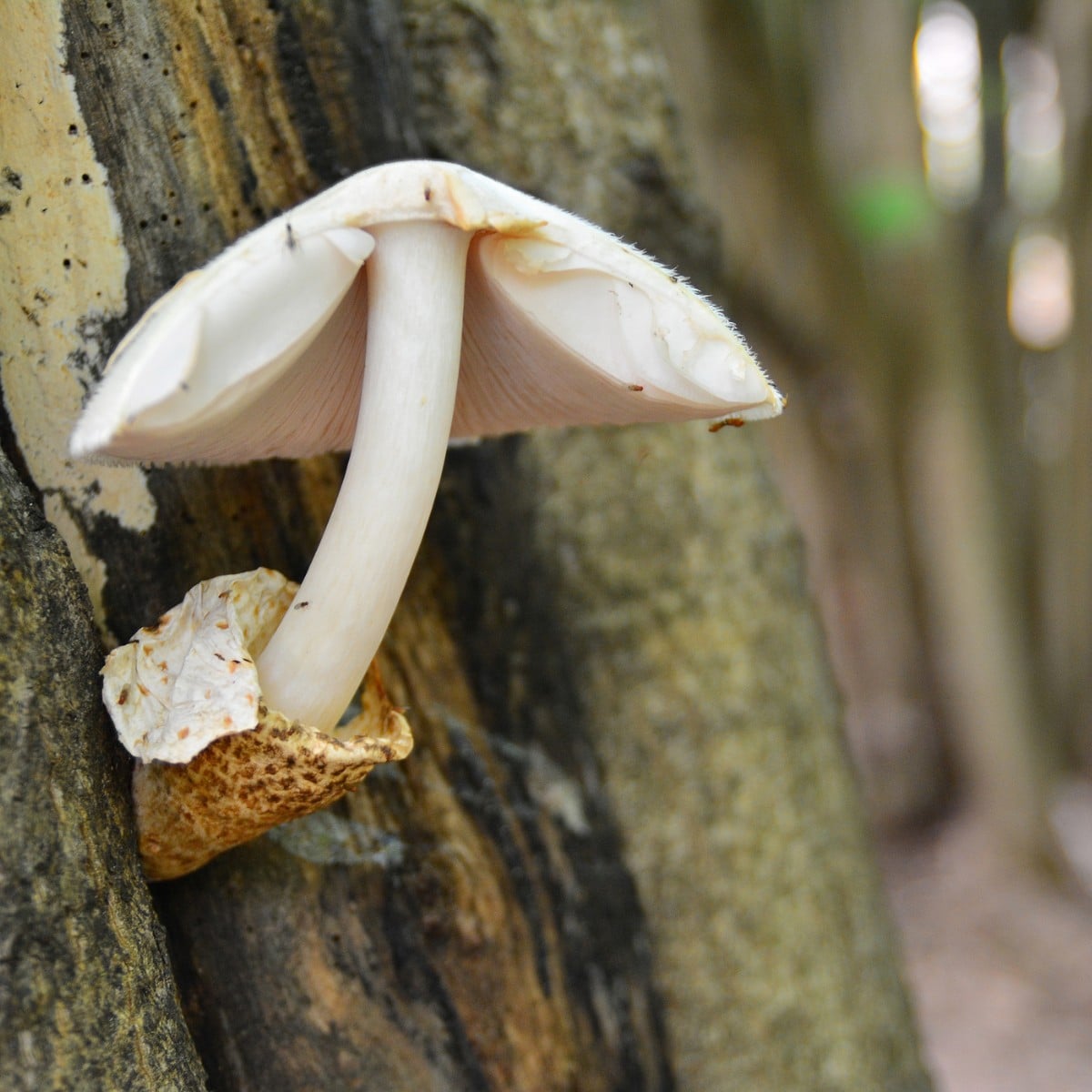
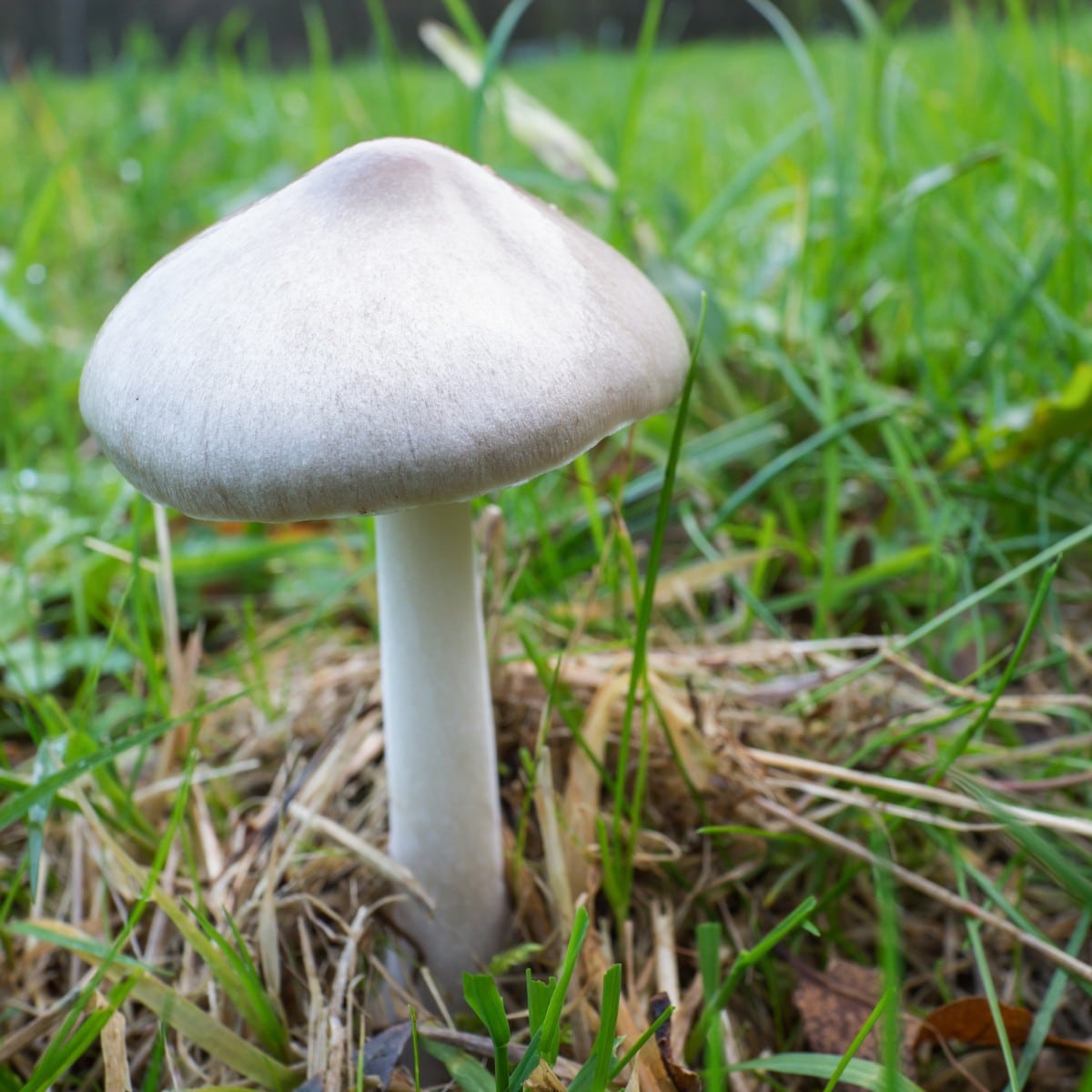
Similarly, Agaricus volvacea and Amanita bisporigera may be confused with the non-toxic Leucoagaricus leucothites.
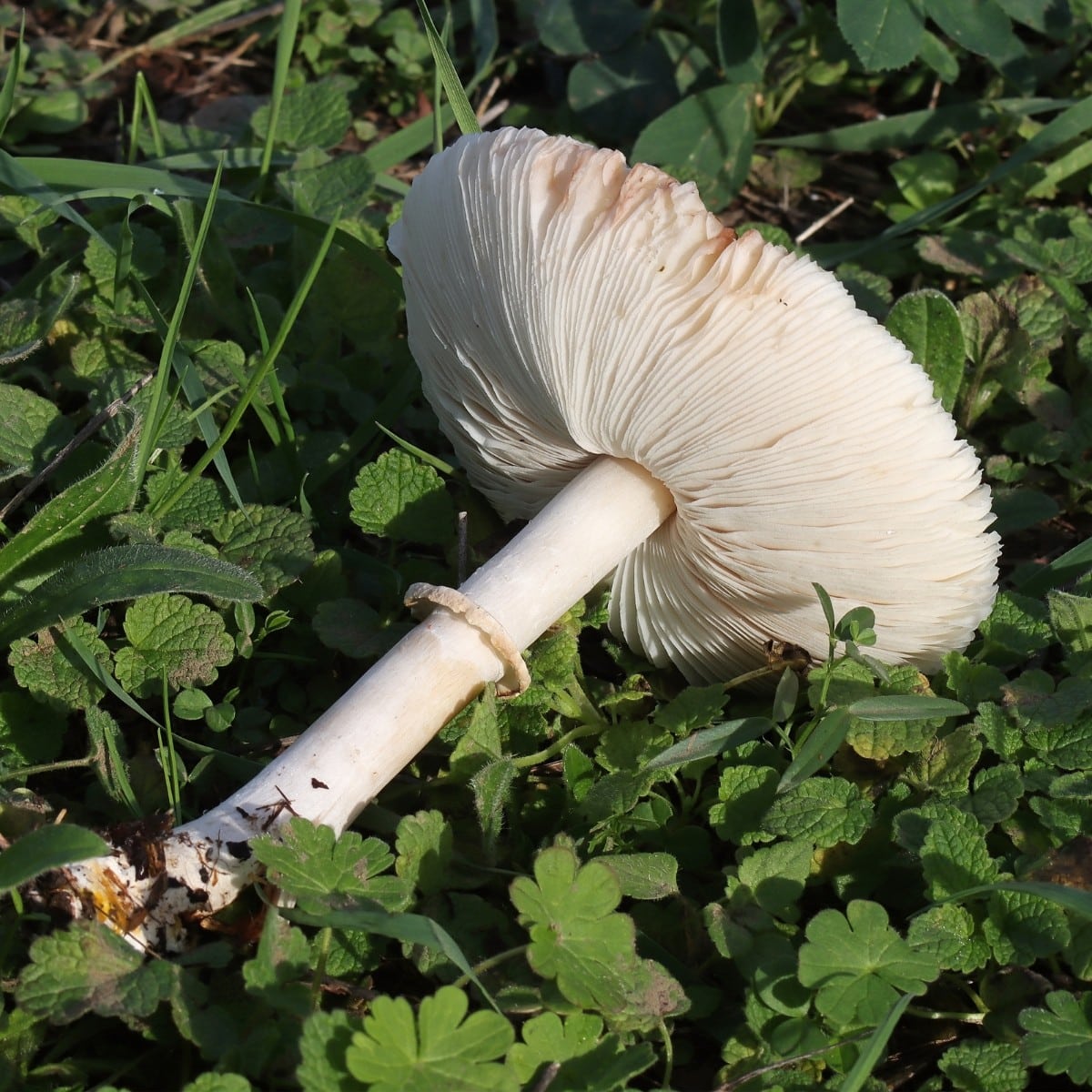
These misidentifications occur because Amanita mushrooms have no distinct taste or odor and are often indistinguishable in color or appearance from edible species.
Amatoxin Poisoning Statistics and Trends
Amatoxin poisoning is a small, yet significant global health concern, with amatoxin-containing mushrooms accounting for 95% of deaths from mushroom ingestion worldwide. In the United States, the National Poison Data System of the American Association of Poison Control Centers (AAPCC) reported 6,458 single exposures to toxic mushrooms in 2021.
In 2016, the California Poison Control System (CPCS) investigated 14 suspected death cap poisonings in five northern California counties — all in the space of 2 weeks. One patient was an 18 month old child who developed cerebral edema and suffered permanent neurologic issues. The remaining patients all recovered completely, although 3 patients received liver transplants because of irreversible liver failure. It is believed that all these poisonings occurred because it was a boon mushroom year and a lot more people were out picking fungi.
In Switzerland, between January 1995 and December 2009, 5,638 inquiries concerning human exposures to mushrooms were reported to the Swiss Toxicological Information Center. This accounted for 1.2% of all inquiries. Among these, 32 cases were confirmed as amatoxin poisonings, with five resulting in fatalities.
Demographic Patterns
Amatoxin poisoning affects various age groups, but children are particularly vulnerable. Most unintentional mushroom exposures occur in children younger than 6 years.
Adults, of course, are not immune to the dangers of amatoxin poisoning. Many cases result from amateur mushroom picking or accidental ingestion. In some instances, individuals seeking psychotropic mushrooms for recreational purposes mistakenly ingest Amanita mushrooms, leading to severe poisoning.
Seasonal Variations
Amatoxin poisoning incidents often follow seasonal patterns, coinciding with mushroom growth cycles. In California, local mycologists noted an abundance of wild mushroom growth in 2016, which corresponded with an increase in the incidence of mushroom poisoning reported by county health departments. While a direct cause-and-effect relationship cannot be established, early seasonal rainfall followed by warmer temperatures likely contributed substantially to mushroom proliferation.
A study in Thailand revealed that 40 out of 55 mushroom poisoning cases (72.7%) occurred between May and September, which aligns with the rainy season and the peak growing period for mushrooms. This pattern highlights the importance of increased awareness and caution during specific seasons when foraging activities are more common.
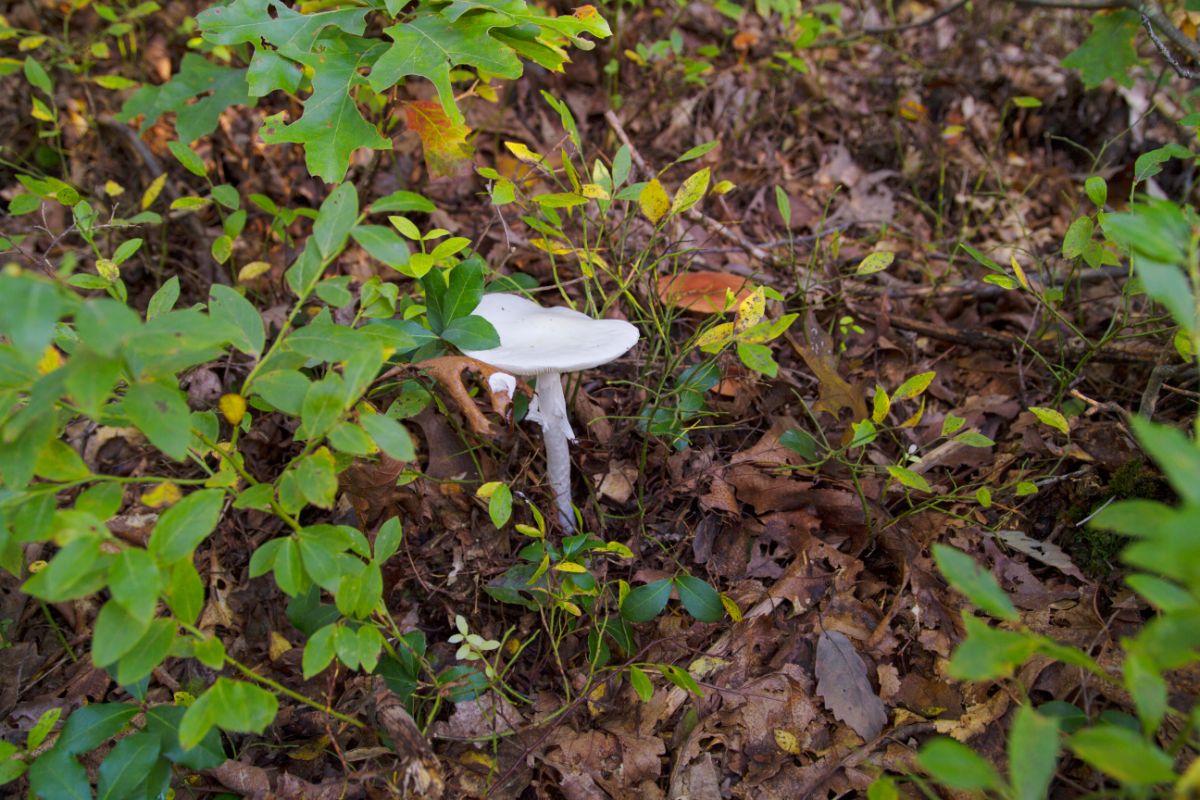
Amatoxin Poisoning Quick Guide
Amatoxins work like a molecular Trojan horse in your body. Here’s how:
- They’re easily absorbed by the digestive system
- They travel through the bloodstream, targeting vital organs
- The liver, being the body’s filter, bears the brunt of the attack
- Once inside your body, amatoxins wage a silent war on your cells. Their primary target? The liver
- Imagine your liver as a bustling factory, constantly producing proteins essential for life. Amatoxins sneak into this factory and are bound to an enzyme called RNA polymerase II. , halt the production of vital proteins, and cause widespread cell death in the liver.
While the liver is the primary target, amatoxins don’t stop there. They can also affect:
- Kidneys: Leading to acute kidney failure
- Brain: Causing confusion and coma in severe cases
- Other organs: Resulting in multi-organ failure
The Deceptive Nature of Amatoxin Poisoning
Mushroom poisoning by amatoxins is particularly dangerous because:
- Initial symptoms are mild and flu-like
- There’s a “false recovery” period where the person feels better
- By the time severe symptoms appear, it’s often too late
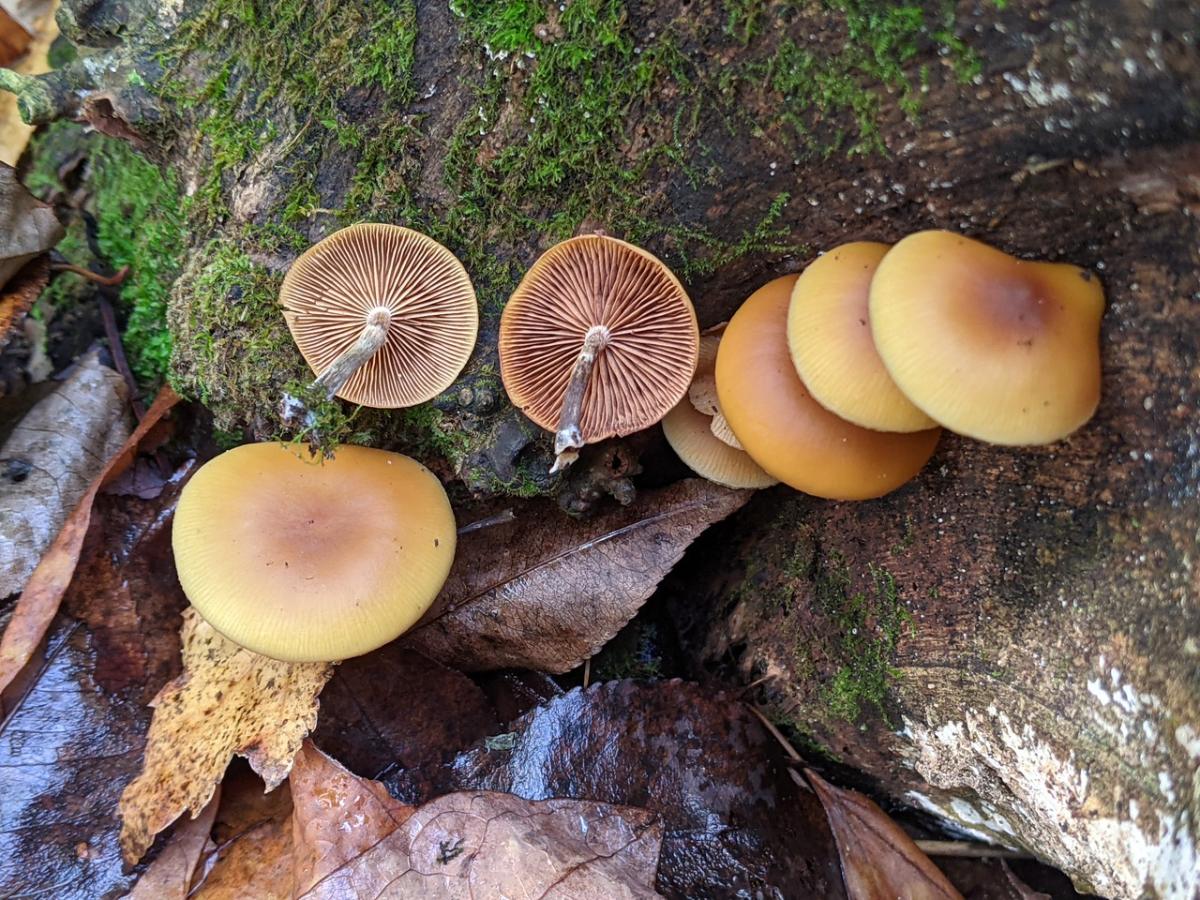
Common Questions About Amatoxin
What effects does amatoxin have on the human body?
Amatoxin can cause a range of symptoms, including irritation of the respiratory tract, headaches, dizziness, nausea, shortness of breath, coughing, insomnia, diarrhea, gastrointestinal issues, back pain, increased urination, and potentially severe liver and kidney damage. If you suspect you’ve eaten a mushroom containing amatoxin, seek medical help immediately.
What are the phases of poisoning from amatoxin containing mushrooms?
Poisoning from amatoxin-containing mushrooms involves several stages. Initially, there is a latent phase lasting 12-24 hours without apparent symptoms. This is followed by symptoms similar to gastroenteritis, including nausea, vomiting, and diarrhea. Several days after ingestion, the individual may experience renal failure and severe kidney damage.
Is there an effective treatment for amatoxin poisoning?
While there is no specific antidote for amatoxin poisoning, treatment primarily involves supportive care. This includes aggressive administration of intravenous fluids and electrolytes to address deficiencies and ensure proper hydration.
What is the lethal dose of amatoxin?
Research indicates that the lethal dose 50 (LD50) of α-amanitin, a component of amatoxin, is extremely low, estimated at 0.1 mg/kg of body weight when ingested orally. This means that eating just one A. phalloides death cap mushroom, which contains about 5-8 mg of amatoxins, could be potentially lethal for a person weighing 165 lb.
For children and small animals, the lethal dose is much lower.






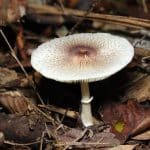
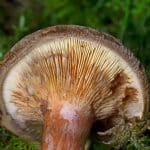

Leave a Reply